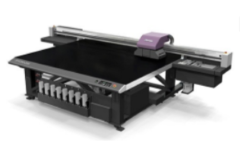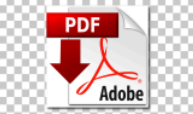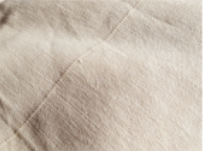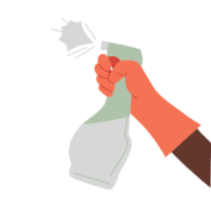| Exploring Flatbed UV-cured Printers |
 |
| Flatbed UV-cured printers are advanced printing devices designed to produce high-quality prints on a wide range of substrates. These printers are equipped with UV (ultraviolet) curing technology, which allows for rapid drying and curing of inks as soon as they are applied to the surface. This technology offers several advantages over traditional printing methods, making flatbed UV-cured printers a popular choice in various industries, including signage, packaging, graphics, and industrial applications.
Flatbed UV printers have revolutionized the printing industry by offering a versatile and efficient solution for a wide range of applications. Flatbed UV printers operate on a unique printing technology that allows for direct printing on various surfaces. Unlike traditional printers that use solvent-based or water-based inks, flatbed UV printers use ultraviolet (UV) curable inks that cure or harden instantly when exposed to UV light.
|
| Printing Process Key Steps |
 |
- Surface Preparation:
Before printing, the surface of the material undergoes
meticulous preparation to ensure optimal ink adhesion and print
quality. This process varies depending on the substrate but
often involves cleaning, treating, or coating the material. For
example, substrates like glass or metal may require thorough
cleaning to remove dust, oils, or other contaminants that could
interfere with ink adhesion. Additionally, certain materials might
benefit from pre-treatment solutions or primers to improve ink
adhesion and ensure long-lasting prints.
- File Preparation:
The design or image intended for printing is created or modified using
graphic design software such as Adobe Illustrator or Photoshop. Designers prepare the file according to the specific requirements of the flatbed UV
printer, ensuring compatibility with the printer's color profile and resolution capabilities. Files are typically saved in formats such as PDF, EPS, or SVG, ready for direct printing onto the substrate.
- Loading the Material:
Once the surface preparation and file preparation stages are
complete, the material to be printed on is carefully loaded
onto the flatbed of the printer. This can include a diverse
array of materials ranging from rigid substrates like wood,
glass, metal, plastic, ceramic, and acrylic to flexible materials
like vinyl and fabric. The flatbed design provides stability and
precision during the printing process, ensuring accurate
placement of ink onto the substrate.
- Printhead Movement:
Flatbed UV printers are equipped with movable printheads that traverse the width and length of the flatbed in a controlled manner. The printhead movement is precisely coordinated with the digital file, allowing for accurate deposition of ink onto the material surface. Advanced printing algorithms ensure smooth movement and consistent ink delivery, resulting in high-quality prints with sharp details and vibrant colors.
- Inkjet Printing:
The printheads of flatbed UV printers contain multiple nozzles that
eject tiny droplets of UV-curable ink onto the surface of the material.
These UV inks are specially formulated with monomers and
photoinitiators that react to UV light. As the ink droplets land on the
substrate, they spread out and form the desired image or design. The
UV inks offer excellent adhesion properties and adhere effectively to a
wide range of substrates, ensuring durable and long-lasting prints.
- UV Curing:
Immediately after the UV ink is deposited onto the material surface,
it passes under UV lamps integrated into the printer. These UV
lamps emit intense UV light, which triggers a rapid chemical
reaction in the ink known as polymerization. This process causes
the ink to solidify and harden almost instantly, forming a durable
and scratch-resistant layer on the substrate. The instant curing
eliminates the need for additional drying time, allowing for faster
production speeds and increased efficiency.
- Layering and Color Mixing:
Flatbed UV printers have the capability to print multiple layers of ink on top of each other, enabling the creation of intricate designs and vibrant colors. By layering different colors and adjusting ink densities, printers can achieve a broad color gamut and produce prints with rich, dynamic hues. Additionally, UV printers can mix inks directly on the substrate, enabling precise color matching and customization according to the client's specifications.
- Finishing:
Once the printing process is complete, the printed material may undergo additional finishing processes to enhance its appearance, durability, or functionality. This could involve applying clear coatings or laminates to protect the printed surface from abrasion, UV exposure, or environmental factors. Finishing techniques such as embossing, varnishing, or spot UV coating may also be employed to add texture, gloss, or other special effects to the printed material, enhancing its visual appeal and tactile qualities. These finishing touches ensure that the final product meets the highest standards of quality and craftsmanship, making it suitable for a diverse range of applications across various industries.
|

Flatbed Printer

File Preparation
|
| Pros and Cons of Flatbed UV Printers |
 |
| Pros of Flatbed UV Printers:
- Versatility: Flatbed UV printers can print on a variety of
materials, including wood, glass, metal, acrylic, leather, and
more. This versatility makes them suitable for diverse
applications such as signage, promotional items, packaging,
and personalized products.
- High Resolution and Sharp Detail: These printers can
produce high-resolution prints with sharp details, ensuring
excellent image quality. The UV curing process also contributes
to vibrant and long-lasting prints.
- Instant Drying: UV inks cure instantly when exposed to
UV light. This feature eliminates the need for drying time,
allowing for faster production and increased efficiency.
- Durability: UV-cured prints are more durable and
resistant to scratches, water, and fading compared to traditional prints. This durability is particularly advantageous for outdoor applications and products that undergo regular wear and tear.
- Eco-Friendly: UV printers often use eco-friendly UV-curable inks that emit fewer volatile organic compounds (VOCs) compared to solvent-based inks. This makes them a more environmentally friendly option.
- Direct Printing: Flatbed UV printers allow for direct printing on various substrates without the need for additional treatments or coatings. This simplifies the printing process and reduces production costs.
Cons of Flatbed UV Printers:
- Initial Cost: Flatbed UV printers tend to have a higher upfront cost compared to some traditional printers. However, the versatility and efficiency they offer can justify the initial investment over time.
- Limited Print Size: The size of the flatbed dictates the maximum printable area. Larger prints may require multiple passes or a more extensive printer, which can be a limitation for some applications.
- Maintenance Requirements: Regular maintenance is crucial for optimal performance. UV lamps, printheads, and other components need to be checked and replaced as needed. Maintenance costs should be factored into the overall cost of ownership.
- Learning Curve: Operating a flatbed UV printer may require some training, especially for those new to the technology. Proper knowledge of software, file preparation, and printer settings is essential for achieving optimal results.
|

Material
|
| Conclusion |
 |
| Flatbed UV printers offer businesses a powerful tool for enhancing their printing processes and delivering outstanding results to clients and customers. With their ability to produce high-quality prints, ensure durability, and promote eco-friendliness, flatbed UV printers have become indispensable assets in industries ranging from signage and packaging to graphics and manufacturing. By carefully considering the pros and cons and implementing best practices, businesses can leverage the capabilities of flatbed UV printers to drive innovation, improve efficiency, and achieve greater success in their respective markets.
|

Surface Preparation
|
| Additional Resources |
 |
|
For more information on our printing services, click here!
For more information on our Epson P7000, P9000 Printers, click here!
|

KeenART Media
|
|
If you have questions about any of our services or products, don't hesitate to contact us. Our knowledgeable staff is always happy to assist with answers, advice, or suggestions.
|
|

|



|
USA Giclee On Canvas, Fine Art Printing - Art Scanning & Reproductions - Handmade Oil Paintings - Custom Wood Panels, Metal Picture Framing - Block/Plaque Mountings, Large Format Dry Mounting & Lamination - Art Supplies: Stretcher Bars, Cradled Wood Panels and Artist Canvas - Collages On Canvas - Plexi/Acrylic Face Mounts - Block Acrylics, Fabric Printing, Dye Sublimation - Cityscape Skyline Prints, Resin, Photo Gifts and more...
|
|
© 2002-2026 - KeenART Media Ltd.
|
|
| |
|
